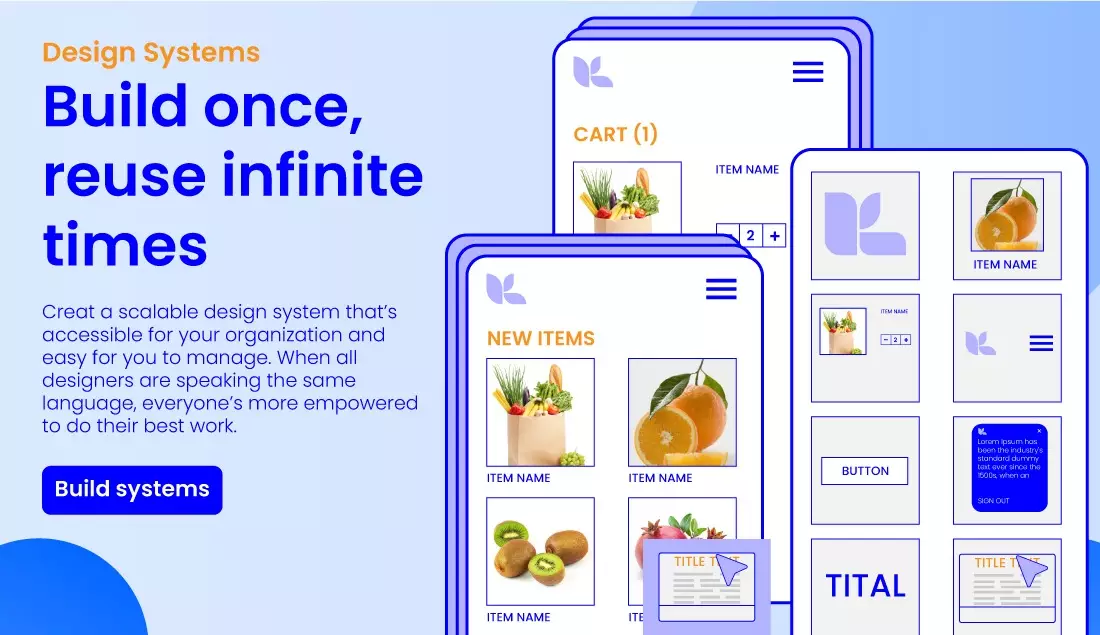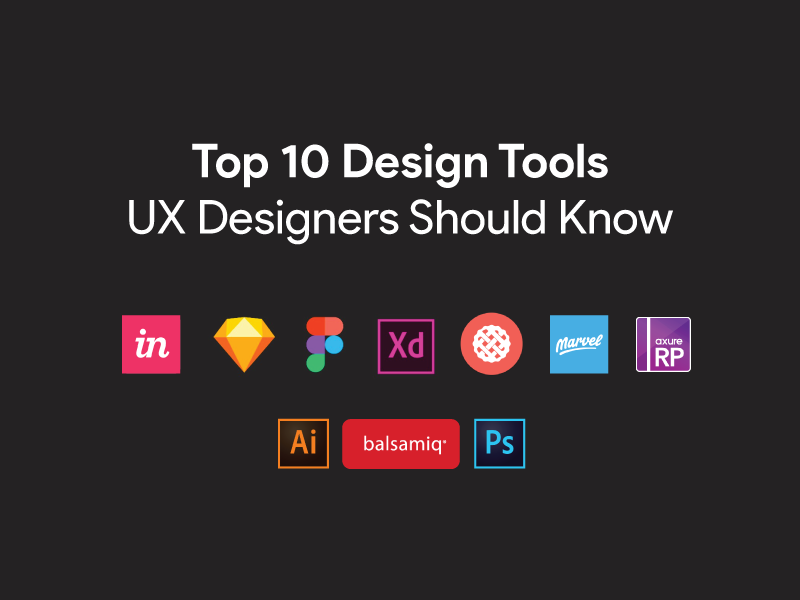The best system for UI/UX designers
The best system for UI/UX designers
Obviously, you need a computer to do digital work. Even though many companies outsource work to laptop employees, you need to build your skills on something. You also need a suitable computer for any independent work. I’m always surprised by the number of designers I talk to who go with old computers: 8-year-old MacBooks, cheap basement PCs, etc.
Laptop vs desktop
In a laptop vs. desktop battle, the desktop will win every time in terms of raw power. Desktop computers are also much more valuable in terms of cost performance. Most people with laptops, including myself, put their laptops on a desk and use them just like most people use desktops. Unless you’re constantly moving house every few months, or like showing off your design skills to unsuspecting strangers in coffee shops, I’d consider a desktop to start your design journey with.
Processor
I recommend getting a computer with at least a quad-core processor, Intel i5 or higher. What’s the difference, you ask? In general, more cores means better multitasking and better overall performance. You may see a drop in performance after going to the i9, but those extra seconds spent on render or export times add up quickly. In general, avoid low-power processors such as Intel’s Y series.
RAM
I am a Rome enthusiast. I grew up in an era where a simple RAM upgrade could double or triple the performance of your computer. People can get by with less RAM these days, but let me use my soapbox:
Most computers have a standard RAM of 8 GB. This will be good for word processing, watching Netflix, writing emails, etc. However, I recommend at least 16 GB for best performance. We rarely use one app at a time these days, I have 2 browsers with 20+ tabs open, Spotify playing, and 2 or 3 Adobe apps open in addition to Sketch and Slack. Having enough RAM ensures that the whole operation runs smoothly.
save
128GB or less is simply not enough. In a few months, you will run out of free space. 256 GB is more realistic. 512 is better than 1TB to be on the safe side for future protection. Do you work with large media files like videos? do you play Will you ever be in the future? If the answer is yes, I’d go with more storage. And for God’s sake, don’t even consider an old spinning hard drive. Go for a fast SSD. This one change alone will greatly speed up your workflow.
monitor
This is another area where laptops suffer. It was a huge life upgrade for me after I connected my 13″ MacBook to a 27″ monitor. There is much more room for multitasking. If you go 24″ or smaller, a 2k monitor will be fine. 27″ or higher, go to 4k. You don’t want to see pixels on your screen.
Also, if you have an older laptop with integrated graphics, you should check if your computer can push a 4k display without blowing up. If your workload includes visual design work, go for a monitor with 98% or more sRGB coverage for the best color accuracy. Unless you’re a gamer, a monitor with a 60Hz refresh rate will be fine and save you money.

Graphics
Many gaming laptops have advanced graphics cards at the expense of portability
In general, you want a computer with a dedicated graphics card. Lately I’ve been getting into more motion work on the weekends and the integrated graphics on my MacBook Pro are really bothering me. Yes, you can buy a big, expensive external GPU that may or may not work with your system, and that’s a huge headache. If your wallet can handle it, I’d go with a 16-inch MacBook, iMac, or PC with a graphics card.
Mac vs PC
Anyone remember this? This argument is as old as time. PCs tend to be cheaper and more customizable on average, but just note that you can’t run Sketch, which is a Mac-only app.
I personally switched to Mac in 2014 and haven’t looked back since. Whether or not you pay the Apple Tax is up to you. Of course, if you like to play games after a hard day of drawing, you’ll want a PC. Note that Macs can also run Windows through “bootcamp”, but generally the experience won’t be as smooth.
We hope you don’t get tired of investing in a new computer. Despite these recommendations, remember that you can make whatever system you have work for you. Minimize Chrome tabs, try replacing the old HDD with an SSD, open up your old laptop to fit more RAM, etc. UX and build your skills.
Start with whatever you have now and work your way up. You will be fine! Have a good shopping.
Many tools have been created for ui/ux design, all of which have features that enable designers to provide a better user interface and user experience to the user and facilitate the design process for them. Therefore, without a doubt, after acquiring science and knowledge in ui/ux design, the use of appropriate tools is necessary for the work of site designers. Remember that the tools will not tell you how to design your site.

They simply help you implement your idea more easily. UX is more important today than ever. In ui/ux design, in addition to paying attention to the attractiveness of the final design, you should also pay attention to the path you intend to lead the user to. If a website has a standard user interface design and stays away from the user experience, users tend to get rid of it, no matter how beautiful the website is.
One of the most famous sentences in the world of design, which is from IDEO, is as follows: “If a picture can be described in a thousand words, a prototype is worth seeing a thousand times”, although this sentence is directly related to how you design your prototype. and it should be seen at what level (weak, medium, strong, super) your design is made.
The best user interface (UI) design software
In the “What is UI” article, we talked enough about UI design and its difference from UX; Now, in this article, we will go directly to the introduction of user interface design software, or UI.
You don’t need a lot of software for UI design, and to be honest, there aren’t a lot of tools. In other words, there are three famous and popular softwares that are used by most UI designers. Adobe XD, Sketch and Figma are three important user interface design software. We also used Adobe XD software in the user interface design training course.
The rest of the software we introduced are not as complete and practical as these three, but they can be used in simple and smaller projects. In total, we introduced 10 suitable software for Windows and Mac operating systems, as well as web applications.
Well, first, let’s get to know the three most popular user interface design software, then let’s go to the others.
1. Adobe XD
2. Sketch
3. Figma
4. Axure RP
5. Invision Studio
6. Framer X software
7. Marvel application
8. Mock-up Plus (Mockplus)
9. Zeplin
10. Origami Studio
Some fantastic figma features
1) According to our front-end designer, Benjamin Reid, “Figma has a similar USP to Sketch except that it is a cross-platform. When I used it to create some icons for an article on my website I found the workflow to be very good.
It didn’t take much time for me to learn it and later it added the possibility of collaboration: so you can share images with others in this app, I tried to use Linux for my work and sometimes we used Windows but Figma gave me a different feeling. On the other hand, there were many tools in other platforms that had shortcomings.
2) Figma is different from other competitors such as Spaces from file-sharing site Hightail and Wake; Because the inner core of Figma is a vector editing tool. Therefore, there is no need to design in Adobe Illustrator and then import it into Figma, and designers can design vector directly in Figma itself.
Figma also works within the browser, easily connecting to the Cloud, allowing different designers to work on the same project at the same time.
3) Figma is an interface design tool that allows multiple designers to work together. This tool is accessible in the browser, in Windows, Mac and Linux, and its free and paid versions are also available depending on your usage. Figma removes the repetitive parts of the design to help automate the user’s workflow, and it also has a cloud space that makes it easier for you to access your files.
Which UI design software is better?
All of the software introduced can be used for user interface design projects, but there are a few things to consider, firstly, the workload is very important. When you are going to design several pages in a group, you should choose a software that has the ability to work in groups and can cover all your needs in terms of software.
The second point is the possibility of coordination with programming and development teams. Developers usually use the final files of popular software such as Adobe XD or Sketch, so UI designers inevitably (or fortunately!) must use these software.
Our final suggestion is Adobe XD, Sketch and Figma.







